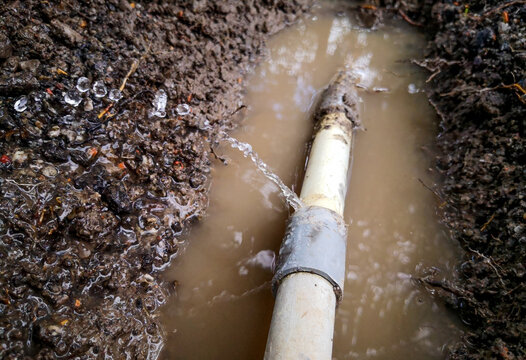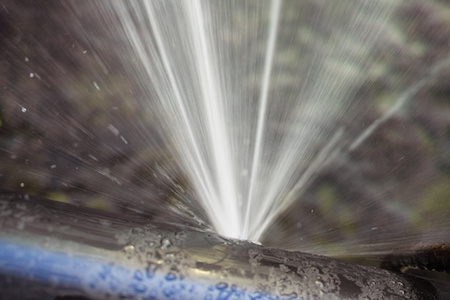Emergency Response: Pipe Burst Edition
Emergency Response: Pipe Burst Edition
Blog Article
This post down below relating to 6 Basic Steps to Stop a Burst Pipe from Getting Out of Control is exceptionally fascinating. Give it a go and make your own personal ideas.

The immediate action when a pipe bursts in your building is to enter full panic setting. Do not fret; you are not the only one as most property owners feel in this manner, also. After all, this issue can cause considerable residence damages.
Though it may be tough to do, continue to be calm as well as accumulated. Making hasty choices can make the scenario worse. To help you out, right here are 6 prompt actions you should take when dealing with ruptured pipelines. Bear in mind, expertise is power so reading up on this before it happens will allow you to stay in control even in the middle of an enormous emergency water leak:
Conduct a Quick Visual Assessment
Though your impulse is to turn off the shutoff today, pause for some time and also perform a quick visual assessment of the website. Try and detect where the water is dripping from. Doing so will enable you to encourage the plumber on what location to consider. This less-than-a-minute examination will certainly conserve you time and assist your plumber promptly determine the origin.
Close the Key Water Valve
After a quick check, you can now turn off the major water. Keeping water running will certainly cause large damage. The last thing you require is significant flooding warps wooden floors or ruins devices and furniture. You additionally want to prevent mold and mildew development. Turn off the valve as well as call the plumber for an emergency inspection.
Drain the Pipe
As you wait on the plumber to show up, drain pipes the water streaming in the pipelines. Simply run your faucet and also purge the commode to make certain that whatever water is continuing to be will totally drain. When you do this, the leak will certainly stop going where it's not supposed to be in the first place. With that, the plumber can additionally work faster. Just don't forget to shut down the tap after the pipelines are drained pipes.
Attempt a DIY Pipeline Repair Work
If you've got handyman abilities, do a small repair like sealing a tiny crack. You can acquire piping sealer to make quick fixes. Be cautious with the application, so you do not intensify any kind of issues. If you require to tighten a couple of nuts and bolts, stand up to the urge to over-tighten as this can lead to leakages down the line.
Eliminate Any Kind Of Standing Water
Do not let any type of standing water sit for also. It will certainly lead to more damages if water permeates right into your floorings or carpet. You also don't want it to move right into essential products like electronic devices. Tidy up the water and dry the area off instantly. If you have electrical followers, maintain them going to flow the air and also advertise much faster drying out.
Call a Dependable Plumber
If you feel unsure about your abilities to repair a little fracture or tiny leakage, it is best to call a professional plumber. When it concerns repair work, they have the expertise, skills, devices, as well as experience to obtain things done quick. Tinkering with pipelines is not a joke as it can result in even more problems if done inaccurately. Locating a credible plumbing service ensures your water leakage is fixed efficiently and properly.
A Frozen Pipe Has Burst, What Are The Next Steps?
How to Tell if Pipes are Frozen
It’s important to catch frozen pipes early to prevent damages. Typically, you will be able to boost your thermostat or talk a professional plumber before any damage occurs. However, here are a few signs that will help you identify if your pipe is frozen.
No Water – An obvious sign that you have frozen pipes is if there’s a complete lack of water coming from your faucets or fixtures. Frost – If you can gain access to view your pipes, check to see if there is visible frost on them. Take note of which parts of the pipe has frost. Smell – If your pipes freezes, it will block food and waste down your drain, causing a backup and your room to begin to have a bad smell. How to Tell if a Frozen Pipe has Burst
Inspect the Inside of the Building. Go through each area of the building and look for actively dripping water and signs of water damage. Examine any exposed pipes and check them for frost or condensation. Especially keep an eye on rooms such as bathrooms, kitchens, laundry rooms, and unheated areas of the building. Turn on the faucets and flush your toilets. Ensure they are working and the water has no discoloration or smell to it. If there is only a slow trickle of water coming out, or no water at all, this might mean a frozen pipe has burst. Check your water meter. If all fixtures in the building are off and it still shows movement, this could be a sign of a burst. Check the exterior of the building. Look for water building up anywhere out of the ordinary, or sinkholes in your yard. Remove Water Right Away
It is important to clean up water right away to prevent mildew and mold buildup. You will need towels, buckets, mops, and a wet/dry vacuum. Do not wait for the plumber to remove the water for you, the longer you wait the more likely it is that you’ll get mold or severe water damage.
Avoid Extreme Temperatures
First off, make sure the temperature in your home is no lower than 55*F. If you are going to be gone for a long time, turn off your water with the shut off valve to prevent freezing and bursting.
Don’t Leave Still Water in Pipes
When the weather gets too cold, you should let water drip from your faucet. While the dripping might be irritating, this will help prevent water from freezing. You can detect a frozen pipe if the faucet stops working, or the toilet doesn’t refill.
Taking Precautions with Frozen Pipe Damage
A burst pipe is one of the most common issues people face at home. There can be a number of reasons why pipes burst in harsh climate conditions such as extremely cold temperatures. Low to freezing temperatures can freeze the pipes, causing there to be frozen pipe damage and leading them to burst. Regardless of the type of pipes – whether they be metal or plastic, they can still expand or burst and cause water damage to your home. A burst pipe also requires a significant amount of costs in repairs. This is why it’s important to take all the safety measures to prevent pipes from bursting.
Below are some frequently asked questions and helpful steps to take to safely solve any problems you may be experiencing with your pipes at home.
What to Do When a Pipe Bursts:
Turn off the main water supply Contact a professional Quickly remove and clean excess water to avoid further water damage. Take pressure off pipes by draining the faucets Circulate warm air in your home to slowly thaw pipes Use a repair sleeve to temporarily cover the damaged area of the pipe https://jenkinsrestorations.com/frozen-pipe-has-burst-whats-next/

We had been made aware of that write-up about What to Do When a Pipe Bursts in Your Home through a friend on a different site. If you enjoyed reading our page if you please don't forget to share it. Thank you so much for your time spent reading it.
Best in emergency plumbing services. Report this page